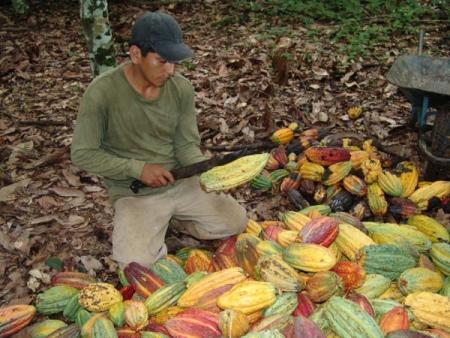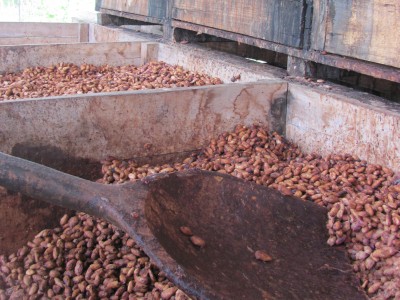
Chocolate
- Cacao bean
- Chocolate liquor
- Cocoa powder
- Cocoa butter
- Chocolate
- Chocolate made with alkali
Sweeteners
- Sugar
- Invert sugar
- Honey
- Glucose syrup
- Lactose
- Maltitol
Fats
- Coconut oil/Palm kernel oil
- Milk fat, Butter oil
- Palm oil, vegetable oilMilk
Milk
- Whole milk powder
- Nonfat milk
- Skim milk
- Whey
Flavoring
- Vanilla
- Vanillin
Emulsifiers
- Lecithin
- PGPR, polyglycerol
- polyricinoleate
- Ammonium phosphatides





 Cocoa liquor was invented by a Dutch chemist named Conrad J. vanHouten to remove the fat from chocolate. Cocoa liquor is a mixture of cocoa powder and cocoa butter. vanHouten also created the process called “Dutching” which is done by adding certain agents to increase the pH of the cocoa powder. This process is used to improve solubility and flavor of the cocoa. Cocoa liquor does not include any alcohol, despite the name.
Cocoa liquor was invented by a Dutch chemist named Conrad J. vanHouten to remove the fat from chocolate. Cocoa liquor is a mixture of cocoa powder and cocoa butter. vanHouten also created the process called “Dutching” which is done by adding certain agents to increase the pH of the cocoa powder. This process is used to improve solubility and flavor of the cocoa. Cocoa liquor does not include any alcohol, despite the name.


